SLIIT Staff Development Programme
Mindmap
Lessons
Date: 21st August 2020
Resource Person: Prof Colin Peiris
In this session, we understood what it is to be an academic.
What is the goal of being an academic and what is the path we
should take to reach there?
Some of the main things covered in
this session were:
- The responsibilities of an academic
- Academic promotions scheme
- Criteria requirements for promotion e.g. research, teaching, institutional development
The highest position that one could achieve:
- Academically would be an Emeritus Professor.
- Administratively would-be a Vice Chancellor
The highest qualifications attainable by academia are:
- PhD – Doctor of Philosophy
- DSc – Doctor of Science
Date: 21st August 2020
Resource Person: Prof Udith Jayasinghe
In this session, we understood how to manage a classroom. The topics covered were:
- How to manage a class
- Three factors related to effective classroom management
- Factors that influence our teaching
- SWOT analysis of a classroom
- Personal and Professional skills required to be an ideal academic
- Outputs and Outcomes
- Head, Heart, Hands, and Health
The four quadrants were extremely important and Prof asked us to assess ourselves every week how well we have achieved them for an idea self-assessment.
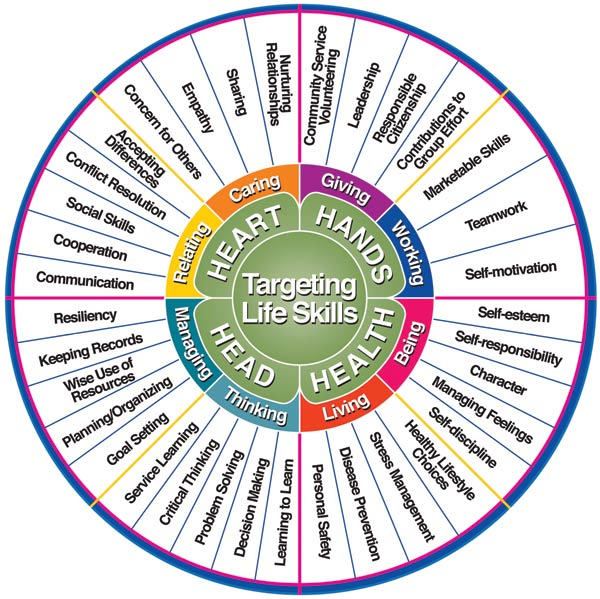
Date: 28th August 2020
Resource Person: Dr B.M.K. Perera
In this session, we understood how to continually develop as a person and why is it important.
Topics covered in this session included:
- Introduction to Reflective Practice
- Social comparison – upward and downward
- Gibs Framework for Reflection
- Kolb’s Learning Cycle
- Emotional Intelligence
- Emotional Intelligence Skill Development
- How to improve our own Emotional Intelligence
Emotional Intelligence
- Emotional intelligence (otherwise known as emotional quotient or EQ) is the ability to understand, use, and manage your own emotions in positive ways to relieve stress, communicate effectively, empathize with others, overcome challenges and defuse conflict.
Social Comparison
- Upward Social Comparison
- Downward Social Comparison
Date: 18th September 2020
Resource Person: Prof. Ranjith Pallegama
In this session we learnt how to properly develop the required elements
of a new degree program. This was especially useful for me as I had to develop a
new degree curriculum (with a team) in the following week – MSc in Artificial
Intelligence and Machine Learning – for which I was able to directly apply this
knowledge. Not a week later, I had to create these for the above
MSc and present them at the Faculty of Computing Board Meeting.
What did I learn?
- Outcome based education
- Graduate Attributes
- Graduate Profile
- Program Intended Learning Outcomes (PILO)
- Module Intended Learning Outcomes (MILO)
- Bloom’s Taxonomy
- Developing a new degree program
We are asked what the attributes of a SLIIT graduate are:
- Information Literacy
- Communication
- Personal and Intellectual Autonomy
- Ethical, Social, and Professional Understanding
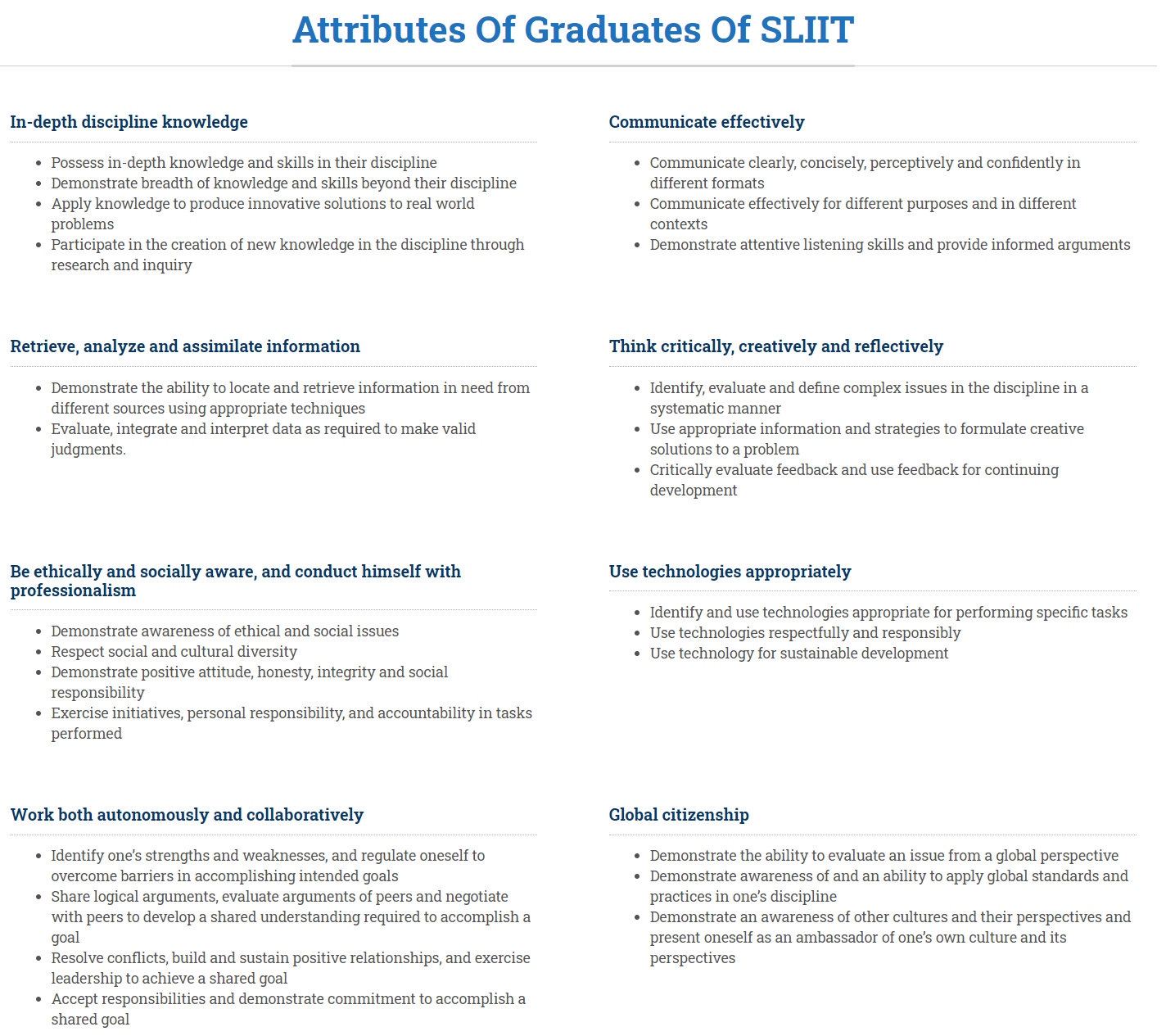
The graduate attributes of the SLIIT graduate must match with the vision and mission of the university. We were shown some examples from other universities as well.
Blooms Taxonomy
- Remember
- Understand
- Apply
- Analyse
- Evaluate
- Create
By carefully applying Blooms Taxonomy to Learning Outcomes, we can carefully design, deliver, and assess the required knowledge, skills, and attitudes.
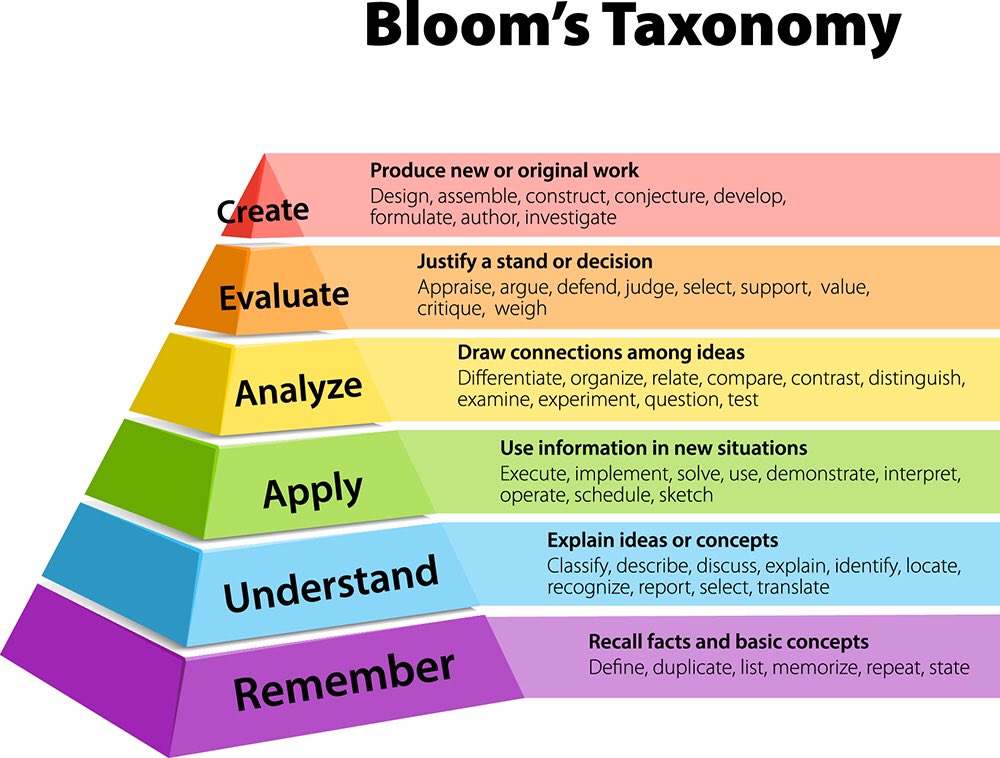
Outcome Based Education (OBE) is when the whole educational system is designed, not on what is taught, but rather what learners acquire and demonstrate at the end of the learning experience.
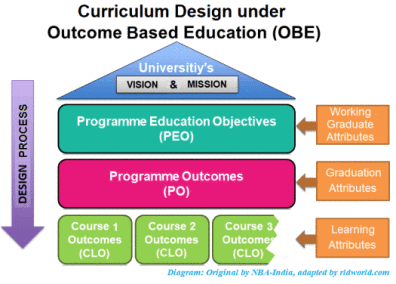
What is a Curriculum?
Curriculum is a standards-based sequence of planned experiences where students practice and achieve proficiency in content and applied learning skills. Curriculum is the central guide for all educators as to what is essential for teaching and learning, so that every student has access to rigorous academic experiences.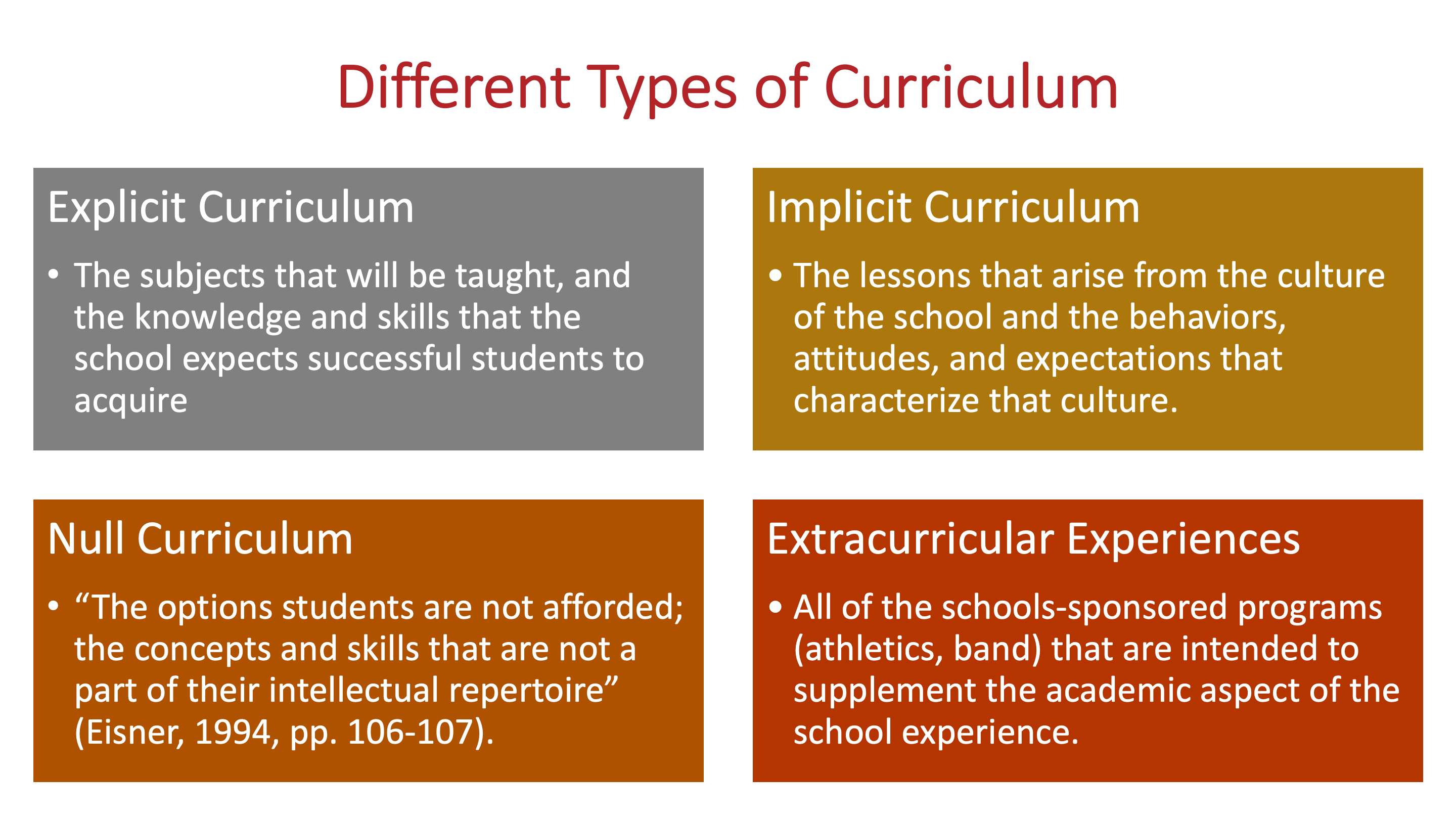
Date: 04th September 2020
Resource Person: Prof. Chalinda Beneragama
In this session, we understood what definition of a good teacher is and how we may become one.
- History of Education in SL
- Who is a Teacher?
- Responsibilities of a Teacher
- Personality Characteristics
- Hard Skills and Soft Skills
- Soft Skills for Academics
- 21st Century Skills
- Academic Ethics, Responsibility, and Accountability
We understood that the role of a teacher is to inspire, educate, encourage, and motivate learners. Good teachers are strong communicators, listen well, encourage collaboration, adapt, engage, have patience, have empathy towards their students, share best practices, and moreover are lifelong learners themselves and value real world learning
Teachers can be involved in hard or soft skill development.
Hard Skills
- Programming, Software Engineering, and IT skills
- Manufacturing
- Operating Machinery
- Cooking
- Engineering
Soft Skills
- Teamwork
- Time Management
- Leadership
- People Skills
- Communication
- Motivating Self and Others
Date: 25th September 2020
Resource Person: Prof. Udith Jayasinghe-Mudalige
In this session we covered some of the most vital teaching and learning methods that benefit
our career.
Motivation
We started with motivation. This is the process that initiates, guides, and maintains
goal-oriented behavior. Education is known to be a dis-utility function (Prof Udith, 2020)
therefore we have to motivate students to continue their learning.
Intrinsic motivation comes from within, which drives the person to do more and better – the
outcome is pure personal satisfaction. Extrinsic motivation comes from external factors for
example a workplace setting key performance indicators for employees that result in
promotions, increments and awards.
Knowing what motivates students (or people) can have benefits such as:
- Help improve people’s enthusiasm and productivity
- Remove addictions and encourage healthy practices
- Empowerment of individuals to be in control of their lives and goals
Motivations for students:
- Behavior of the teacher – Prof Udith very much stressed this point
- Structure of the course
- How the students are assessed
- Information interactions outside the class – Prof Colin added “small talk” here
- Teaching style, techniques, and tools
Teaching Domains
- Cognitive Domain – Knowledge
- Psychomotor Domain – Skills
- Affective Domain – Attitudes
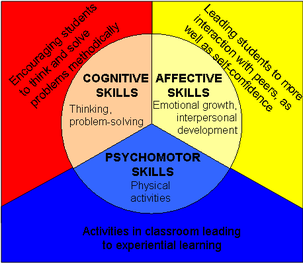
Date: 02nd October 2020
Resource Person: Prof. Chalinda Beneragama
This was an extension from the previous weeks program, adding details and enhancing the
understanding of concepts learnt before. We covered things like types of training, more detail
on Bloom’s Taxonomy, Visual Learning methods, Teacher Centered vs Student Centered Learning,
Cone of Learning, and Resources.
We were asked what is training, that is:
- The process of gaining new skills, new knowledge, and attitudes
- This is also sharpening our existing skills, attitudes, and knowledge
It is vital that all academic staff get training on important aspects, especially to SLIIT, such as:
- Counselling
- Self-management e.g., time management, prioritizing, etc.
- Teaching different skills to students
- Handling large classes
We were asked to compare what we like and dislike in the qualities of 1st and 2nd year students, vs 3rd and 4th year students. I personally found that I like teaching 3rd and 4th year students because they have a drive to complete things and are more mature/professional as they have completed industrial training. However, they are less participative and energetic and 1st and 2nd years.
Prof Chalinda mentioned several ways we can teach in our classroom. And we can apply them (with careful planning) to any class size.
- Lecturing – direct classroom delivery
- Discussion groups
- Live demonstration
- In class activities – e.g., brainstorming, debates, etc.
- Role playing
We also deeply discussed teacher centered learning vs student centered learning, and the 4 quadrants, where the teacher is either a Director, Leading Learner, Nurturer, and Facilitator. We compared the pros and cons of each approach and how should it be used best for different audiences.
We also looked at teaching resources e.g., Whiteboards, Handouts, Specimens, Models, Book / Journals / Newspapers, Posters & Banners, Video Material, PowerPoint, and Interactive Smart Boards.

Date: 09th October 2020
Resource Person: Prof. Chalinda Beneragama
In this session we learnt mainly about Aims, Objectives, Goals, and ILOs. This felt like a
little overlapping with the previous session by Dr Pallegama, still, Prof Chalinda was able to
make it very interesting for us.
The first learning item was how to set SMART Objectives
- (S)pecific
- (M)easurable
- (A)chievable
- (R)ealistic
- (T)imely
Also, objectives can be outcome based or process based. This is the typical argument of whether you would focus on the destination vs journey, or prize vs game.
Finally we learnt about the three domains and their comparisons
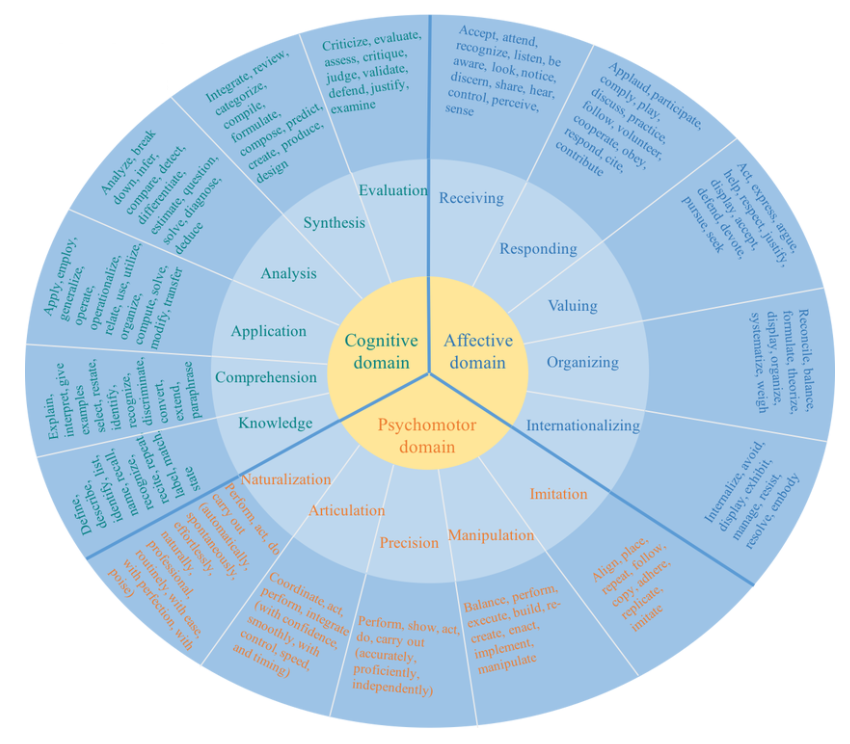
Date: 16th October 2020
Resource Person: Prof. Udith Jayasinghe-Mudalige
This lesson was about creating a sample course outline for a module we plan to teach during
our university career. The things that need to address were:
- Course Title
- Course Code
- Credit Value
- Year/Level
- Semester
- Pre-requisites
- Aim of the Course
- Intended Learning Outcomes
- Course Catalog This is a detailed breakdown of each week
- Topic / Subtopic
- No of hours for
- Lecturing
- Practicals
- Independent Learning
- Delivery Method
- Assessment Method
- Assignment Weightage
- Mapping to ILO
- Mapping Module ILOs to Program ILOs
This again was especially useful to me, as I was in the process of developing the masters in AI program, and I got the valuable opportunity to apply these in real time almost the very next Monday!
Date: 23rd October 2020
Resource Person: Prof. Chalinda Beneragama
In this session we learnt the valuable art of assessment and evaluation. This I believe is one
of the most important sections in the entire staff development program, because it is also one
of the aspects, we struggle the most in our teaching semester at SLIIT. I feel that we at
SLIIT still have a lot left to perfect the best assessment methodologies for our
students
What did we cover:
- Types of Assessments
- Assessment Components
- Assessment Cycle
- Types of Evaluation
- Feedback
We identified two types of assessments in an education system
- Formative Assessment – to give student feedback to improve
- Summative Assessment – assess against benchmarking criteria
Then what is evaluation? And how does it differ from assessment?
“Evaluation focuses on grades and might reflect classroom components other than course content and mastery level. An evaluation can be used as a final review to gauge the quality of instruction. It is product oriented. This means that the main question is: “What’s been learned?” In short, evaluation is judgmental.”
Evaluation is also formative and summative. To get the best outcomes, we need to use assignments and evaluations both in combination.
Finally, we discussed about Feedback. To be effective, it was discussed in detail that feedback needs to be aligning with the goals, tangible, transparent, actionable, user-friendly, timely, ongoing and consistent.
Date: 13th November 2020
Resource Person: Prof. Chalinda Beneragama
In this session we learnt how to do an effective PowerPoint presentation with certain
scientific design decisions backed up by scientific facts.
First, we identified different types of presentations.
- Informative
- Persuasive
- Instructional
- Arousing
- Decision Making
Then we learnt about tips for making effective PowerPoint presentations. Prior to the session we thought we knew how to do effective PPT’s but there were quite a few learning points!
- Keeping it simple
- Reduce text and use images
- Use transitions and animations sparingly
- Use high resolution graphics
- Its good to have a theme, but try and avoid the built in PowerPoint templates
- Use charts and graphs where applicable
- Smart use of color
- Fonts – use a Sans Serif font for presentations and on-screen content
- Use audio and video
- Use the slide sorter to have the optimal order of slides
There is a golden rule of THREE.
- Give a compelling structure to your presentation
- Keep it simple
- Keep your audience engaged
Date: 20th November 2020
Resource Person: Prof. Udith Jayasinghe-Mudalige
Since our promotion is based on research performance, this session was of special interest to
us and exceptionally valuable for our career growth. We learnt several valuable aspects here
such as:
- What is a research project?
- What is the research process?
- How to write a successful research paper?
A research project is a project that follows a scientific method to answer a research question. A research question, on the other hand, is a recursive definition of the previous – as in, a question that needs doing research to be answered!
Research studies can be case studies, controlled studies, sample studies, randomized trials, surveys, and secondary data analyses.
So how does one go through the research process?
- First develop a good research topic, this maybe an iterative process
- Find the relevant information e.g., scientific publications, books, journals, newspapers, websites, datasets, etc.
- Evaluate your information e.g., a systematic literature review
- Write the research paper explaining your methodology and analyzing your results
- Cite your references
This also leads to the basic anatomy or structure of a research paper
- Abstract
- Introduction
- Methodology
- Results
- Discussion
- References
- Appendices
Date: 20th November 2020
Resource Person: Prof. Sriyani Peiris
In this section we learnt about this very exercise we are doing right now – namely how to
manage your own portfolio. A portfolio is a collation of materials that consolidates your
qualifications, skills, experiences, education, and training into a single compilation of
materials. It provides a direct insight into your beliefs, personality, and work
ethics.
Different Types of Portfolio
- Personal portfolio
- Dossier portfolio
- Reflective portfolio
- Employment portfolio
- Assessment portfolio
Portfolio Formats:
- Digital – PowerPoint, Word, etc.
- Web – Websites, Blogs, Online Profiles e.g., LinkedIn
- Hard-copy – Folder
For this exercise, as it is visible, I have chosen to do a reflective portfolio using a website. But what should go on it? As it is visible from this website, I decided on the following sections:
- A Cover page showing a summary of me
- About Myself Page
- Skills Page
- Research Work Page
- Contact Me Page
- SLIIT Staff Development Page
- Lessons
- A Mind Map of the Lessons Learnt
- A Search Engine for quickly looking up keywords and finding lessons
- An expandable list of Lessons arranged by Session Order
- My SDC 05 Final Presentation and Lesson Plan
- Resource Personal
- Batch 05 Participants
- Memories
Date: 20th November 2020
Resource Person: Prof. Nimal Rajapaksha
This was also a very important session to us, which was delivered by our own Deputy Vice
Chancellor Prof Nimal Rajapaksha. This session was vital for our career development,
promotions and understanding how we can develop our research profile.
First, we looked what types of researchers are there:
- PhD Student
- Post-Doctoral Research Associate / Assistant
- Post-Doctoral Research Fellow
- Academic – Lecturer, Senior Lecturer, Reader, Professor
The role of an academic involves primarily doing research, but also carrying out teaching and administrative duties in universities. On the other hand, you find many who are employed primarily as teaching staff also carrying out research.
Then, we looked at the responsibilities of an academic researcher:
- Carry out original, high-level individual and collaborative research with other team members
- Organize your own time and budget effectively, including for off-site and overseas visits
- Prepare and deliver presentations at national and international conferences to large audiences
- Prepare and write high quality papers for submission to peer-reviewed journals and conference proceedings
- Participate in group meetings with other researchers and support staff
- Apply for sources of external funding in addition to that provided by your employer
- Teach undergraduate and postgraduate students
- Comply with all health and safety and ethics requirements for research activities
- Plan and develop future research objectives and proposals
- Supervise students undertaking masters and PhD level projects.
This requires an academic to possess certain skills to carry about the above duties and responsibilities.
- Intellectual ability
- Technical aptitude
- Organization skills
- Interpersonal skills
My Presentation
Date: 15th January 2021
Presenter: Dr. Shyam Reyal
Lesson Plan
Presentation Slides
